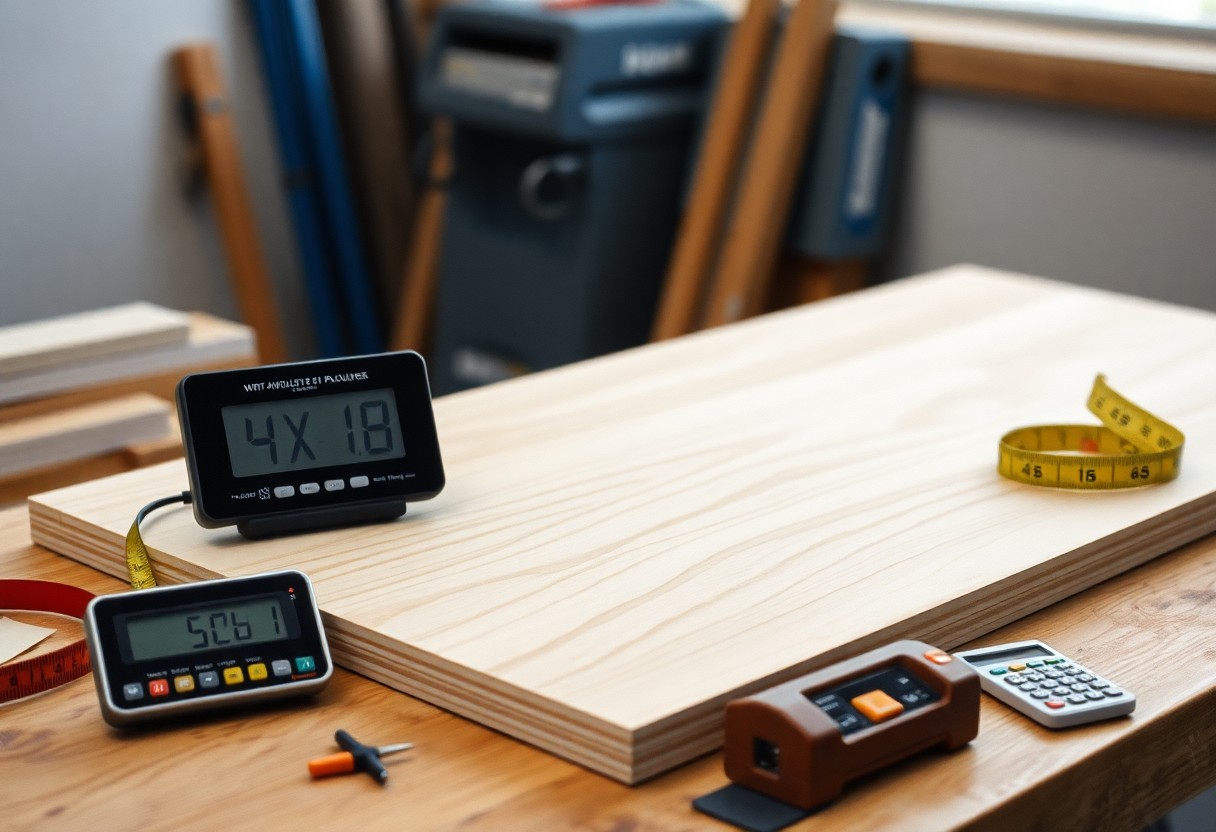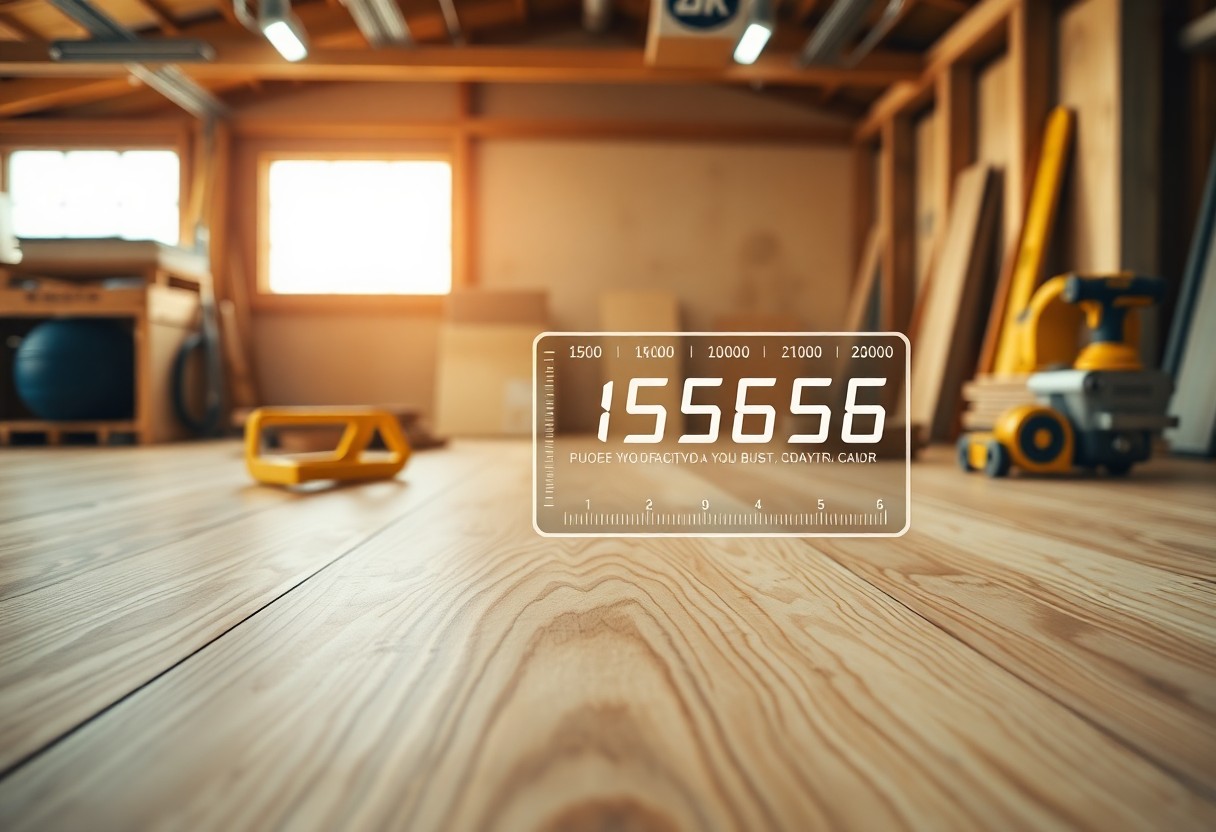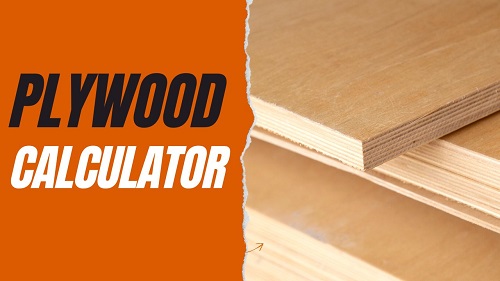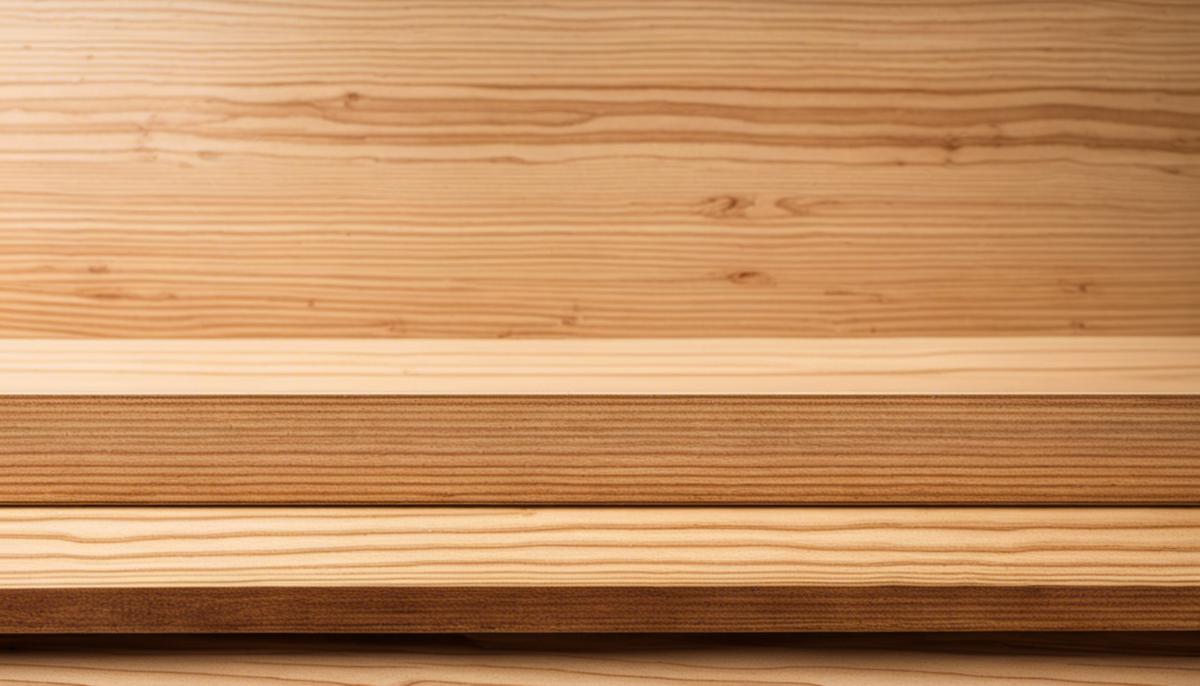Over the years, building a reliable plywood aquarium has become increasingly popular among enthusiasts. This guide will empower you with necessary knowledge about choosing the right glass thickness for your aquarium, ensuring both safety and longevity.
By utilizing our glass thickness calculator, you can determine the ideal specifications tailored to your tank’s size and water volume.
Whether you are constructing a small freshwater setup or a larger saltwater environment, understanding these principles will help you create a secure habitat for your aquatic life.
Plywood Aquarium Glass Thickness Calculator
Aquarium Glass Thickness Calculator
While building an aquarium, understanding the unique qualities of plywood is imperative for achieving a durable setup that supports aquatic life.
Benefits of Plywood in Aquarium Construction
One of the primary advantages of using plywood in aquarium construction is its exceptional strength and flexibility.
Plywood can support significant weight and is less prone to cracking compared to glass. Additionally, it can be designed to fit various sizes and shapes, allowing for creative and unique aquarium setups.
Common Concerns and Misconceptions
Among the misconceptions surrounding plywood aquariums is the belief that they are less aesthetically appealing than glass tanks. People often worry that the appearance of plywood will detract from the overall look of their aquarium.
Plywood can actually be finished and painted to achieve a polished and attractive appearance. When properly sealed, waterproof finishes can enhance its visual appeal while ensuring that the underlying materials remain protected from moisture damage.
Additionally, a well-constructed plywood aquarium often requires less reinforcement, making it both lighter and easier to manage.
Overview of Aquarium Types and Their Requirements
One important aspect of building your aquarium is understanding the specific requirements for different types of setups. Various aquariums will have unique needs regarding size, materials, and water types.
| Aquarium Type | Recommended Size & Glass Thickness |
| Small Freshwater | Up to 20 gallons, 3-5 mm glass |
| Medium Freshwater | 20-50 gallons, 5-6 mm glass |
| Large Freshwater | 50+ gallons, 6-8 mm glass |
| Small Saltwater | Up to 20 gallons, 6-8 mm glass |
| Large Saltwater | 50+ gallons, 8-12 mm glass |
Assume that the correct thickness of glass is imperative for maintaining the integrity of your aquatic environment, whether it’s a freshwater or saltwater setup.
Aquarium types also dictate your choice of materials, shaping your construction approach. Different ecosystems, such as freshwater and saltwater, will respond differently to water pressure and salinity levels in the glass.
- Small freshwater aquariums require 3-5 mm glass to support their lower weight.
- Medium setups need thicker glass for stability, generally around 5-6 mm.
- Saltwater aquariums may demand even thicker glass due to greater pressure, typically around 6-12 mm.
- Plywood adds additional support, often allowing for thinner glass in certain setups.
- Assume that various designs will influence both aesthetic appeal and practical concerns, thus shaping the aquarium’s overall quality.
The Science of Glass Thickness
Some aspects of constructing a plywood aquarium depend heavily on the principles of physics. Understanding these principles allows you to make informed decisions about the glass thickness required for your tank, ensuring both safety and longevity.
Physics of Water Pressure and Its Impact on Glass
Below the surface, water pressure builds significantly with depth. The deeper the tank, the greater the pressure exerted on the glass.
This pressure can lead to failure if the glass is not thick enough to withstand the forces applied by the water and associated contents.
For instance, in large aquariums, the difference in pressure as you move from the top to the bottom needs to be taken seriously.
Material Properties: Glass vs. Acrylic
Physics dictates varying properties between glass and acrylic, impacting your aquarium’s durability and safety.
Glass is non-porous while acrylic is lighter and less prone to shattering, but it can scratch more easily. Glass, however, tends to be more chemically resistant, especially for saltwater environments, making it a popular choice among aquarists.
This distinction means you need to consider the type of environment in your aquarium. For freshwater tanks, 4mm to 6mm glass often suffices.
However, for saltwater setups, you might require thicker glass due to corrosion and pressure. Understanding the interplay between these materials will guide you in making the best decision for your aquarium.
Factors Influencing Glass Thickness
Influencing your choice of glass thickness involves several considerations, including:
- Tank dimensions and water volume
- Intended use (freshwater vs. saltwater)
- Weight of water, decor, and inhabitants
- Structural integrity and safety factors
Thou must weigh these factors carefully to select the appropriate thickness for your specific aquarium setup.
Plus, it’s also important to keep in mind other influencing factors such as:
- Type of framing materials used in construction
- Presence of additional features like filtration systems
- Type of aquatic life that will inhabit the tank
- Environment conditions including temperature and salinity
Thou should assess these variables to determine how they impact the overall design and safety of your plywood aquarium.
Glass Thickness Calculator for Plywood Aquariums
For anyone begining on the exciting journey of building a plywood aquarium, utilizing a glass thickness calculator is an vital step towards ensuring safety and durability. This tool helps you determine the appropriate glass thickness based on your tank’s specific dimensions and the type of water environment you’re creating. By entering the right variables, you can quickly assess the ideal thickness needed for your aquarium setup.
How to Use the Glass Thickness Calculator
Any glass thickness calculator will guide you through a straightforward process. Start by inputting key information such as the aquarium’s dimensions, the total volume of water it will hold, and whether you are setting up a freshwater or saltwater environment. Once you have provided these details, the calculator will generate a recommended glass thickness for your plywood aquarium.
Input Variables and Their Importance
Variables play a significant role in determining the right glass thickness for your aquarium. The size of your tank, water volume, and intended aquatic life all influence the necessary thickness to ensure your tank can withstand pressure and maintain its structure over time.
Due to the nature of water pressure, the height and width of your aquarium can directly affect the glass strength required. For instance, taller tanks will exert more pressure on the glass, necessitating a thicker material for safety. Additionally, considering whether your aquarium will host freshwater or saltwater fish is vital, as saltwater aquariums typically require thicker glass due to the corrosive nature of salt and increased pressure. By taking these input variables into account, you can achieve a sturdy and safe aquarium environment.
Interpreting the Calculator’s Output
Beside providing a recommended thickness, the calculator may also suggest various options depending on your tank’s dimensions and requirements. This can help you make more informed decisions regarding which glass type to use.
Even after obtaining the output, it’s important to cross-reference these suggestions with industry standards and guidelines. Different tank sizes will demand unique thicknesses— for example, a 55-gallon freshwater aquarium might recommend 5mm glass, while a 125-gallon saltwater tank could call for 8mm or more. This will ensure that your aquarium remains safe and durable throughout its lifespan, allowing you to focus on enjoying your aquatic environment.
Safety Standards for Aquarium Glass
Keep in mind that adhering to safety standards for aquarium glass is crucial for creating a secure environment for your aquatic life. The right thickness, combined with industry specifications, can help prevent leaks and tank failures, ensuring your aquarium remains a safe habitat for your fish.
Industry Specifications for Aquariums
At the industry level, specifications dictate that glass thickness must accommodate the size and water volume of your aquarium. For instance, tanks up to 24 inches long typically require 4mm to 6mm glass, while those larger than 48 inches should use glass that is at least 8mm thick.
Regulatory Compliance and Recommended Practices
Recommended practices emphasize the need for compliance with established guidelines when constructing your aquarium. Following these standards not only enhances the safety and longevity of your tank but also ensures a healthy environment for your aquatic inhabitants.
But achieving regulatory compliance often involves more than just adhering to thickness recommendations. You should also consider factors such as the type of water your aquarium will hold, the weight of decorations, and the framing materials used to support the glass. All these aspects play a role in the overall integrity of your aquarium.
Understanding Breakage and Failure Modes
Standards for aquarium construction address potential breakage and failure modes that can occur due to pressure and stress on the glass. Selecting the appropriate thickness reduces the risk of catastrophic failure that can lead to flooding and jeopardize the lives of your fish.
Another important consideration is how different shapes and designs, such as rimless tanks, can impact the likelihood of breakage. Thicker and tempered glass may be necessary for these setups to counterbalance the lack of a frame, providing added strength to withstand external pressures effectively. By understanding these dynamics, you can better protect both your aquarium and its inhabitants.
Comprehensive Guide to Aquarium Dimensions
To properly construct your plywood aquarium, understanding the dimensions is fundamental to ensuring both safety and longevity. The size of your tank directly affects how you choose the glass thickness, as well as the overall structural integrity of the aquarium. Knowing how to calculate the volume and surface area of your aquarium will help you utilize our glass thickness calculator effectively.
Calculating Volume and Surface Area
By determining the volume and surface area of your aquarium, you can accurately assess the appropriate glass thickness needed. Volume is typically calculated using the formula: Length x Width x Height, allowing you to include the weight of water and tank contents in your calculations. Surface area, on the other hand, will help you understand the exposure to the ambient environment.
The Impact of Aquarium Shape on Glass Thickness
Area also plays a significant role in how glass thickness is chosen. Traditional rectangular tanks may require different thicknesses compared to cylindrical or uniquely shaped aquariums. Variations in shape can create different stress points on the glass, necessitating a careful approach to selection.
Aquarium designs such as bowfront or hexagonal tanks distribute water pressure differently, which can affect the overall stress exerted on the glass. For instance, a bowfront aquarium creates concentrated pressure at the curved sections, potentially requiring thicker glass than a standard rectangular aquarium of the same volume. These considerations are vital for ensuring that your aquarium remains stable and secure.
Recommendations for Different Shaped Aquariums
Against conventional wisdom, specific recommendations can vary significantly based on the shape of your aquarium. For rectangular tanks up to 50 gallons, 5-6mm glass is commonly used, while cylindrical tanks might need thicker glass, around 8mm, to handle the distributed pressure evenly.
Indeed, as each shape presents its unique set of challenges, carefully assessing the thickness for your aquarium should be tailored to its specific design. For instance, larger high-rise aquariums may require even thicker glass, like 10-12mm, especially in a rimless setup where stability is a concern. By understanding the implications of shape on glass thickness, you ensure a durable build that contributes to the overall health of your aquatic environment.
Customizing Your Plywood Aquarium
After you have a basic design in mind for your plywood aquarium, customizing it according to your specific needs can take your project to the next level. Personalizing your aquarium allows you to create a habitat that is not only functional but also visually appealing to you and your guests.
Factors to Consider for Custom Builds
For a successful custom build, you need to account for various key factors that affect the aquarium’s design and functionality. These include:
- Tank size and dimensions
- Type of fish and aquatic life
- Water environment (freshwater or saltwater)
- Aquascaping elements like plants and decorations
- Structural support materials and framing
Knowing how these factors interact will help you achieve the best results for your aquarium.
Tailoring Glass Thickness Based on Custom Features
Features like tank height, width, and the presence of unique elements such as filtration systems or lighting can significantly impact the required glass thickness.
The thickness of the glass must be adjusted based on your specific features. For instance, if you are including a taller design for better fish visibility or unique decorations that add weight, this will necessitate thicker glass to support the additional pressure and prevent potential leaks or breakage. Utilizing an aquarium glass thickness calculator can help you make these important adjustments accurately.
Common Customization Errors to Avoid
Along the way, there are several common errors that you should steer clear of when customizing your plywood aquarium. These mistakes may impact your aquarium’s durability and safety.
Further attention to detail can prevent errors such as underestimating the glass thickness for larger tanks or overlooking the importance of using proper framing materials. Be sure to review industry standards and ensure your design is tailored to handle the specific water volume, pressure, and weight of decorations you plan to use. This diligence will contribute to a safer and more reliable aquarium setup for your aquatic life.
Freshwater vs. Saltwater Aquariums
Now that you are initiateing on your plywood aquarium construction journey, understanding the differences between freshwater and saltwater aquariums is vital in choosing the right glass thickness for both safety and durability.
Key Differences in Requirements
Behind every successful aquarium build are distinct requirements for freshwater and saltwater environments. Freshwater aquariums typically exert less pressure on glass due to the lower density of water, while saltwater aquariums are more demanding, necessitating thicker glass to withstand the higher salinity and increased pressure.
Specific Thickness Guidelines for Each Type
Specific guidelines indicate that for freshwater aquariums, glass thickness generally ranges from 4mm to 6mm, effectively handling the standard water pressure. In contrast, saltwater aquariums demand greater thickness, often between 6mm to 12mm, to combat the additional pressure and corrosive properties of saltwater.
Another important consideration is how the thickness recommendations might differ based on your specific setup. For example, a smaller freshwater tank may adequately function with 4mm glass, but a sizable saltwater tank could require 10mm or even 12mm glass to ensure structural integrity and safety over time.
Special Considerations for Corrosive Environments
Differences in the water’s salinity necessitate careful consideration when constructing a saltwater aquarium, as the corrosive nature of salt can affect the integrity of standard glass over time.
Even if you choose glass designed for aquariums, it’s wise to consider using tempered glass for saltwater setups. Tempered glass provides additional protection against shattering, which is particularly important in environments where the glass may be exposed to elevated levels of pressure and corrosive elements. This precaution helps maintain a safe and stable ecosystem for your aquatic life.
Rimless Aquariums: Unique Considerations
Unlike traditional framed tanks, rimless aquariums present unique structural challenges that require careful consideration when it comes to glass thickness and overall design. These tanks are visually stunning and offer an unobstructed view of the aquatic life within, but without a rim to support the glass, the structural integrity relies heavily on the glass’s thickness and quality.
Structural Integrity Challenges
The absence of a rim means that rimless aquariums must rely entirely on the glass panels for structural integrity. This makes choosing the right thickness significantly more important, as the panels must withstand not only the water pressure but also the weight of decorations and the potential for external stresses.
Recommended Glass Thickness for Rimless Designs
Against conventional setups, rimless aquariums typically require thicker glass to ensure stability. For small to medium-sized rimless tanks, a glass thickness of 6-8mm is advisable, while larger tanks should consider 10mm to 12mm glass to avoid the risk of breakage under pressure.
Challenges arise in proportioning the tank’s dimensions and water volume to the appropriate thickness. For instance, if you’re planning a larger rimless aquarium, opting for at least 10mm thick glass will provide additional support and significantly reduce the risk of leaks and structural failure.
Aesthetic vs. Structural Trade-offs
Before choosing a rimless aquarium, consider the balance between aesthetics and structural stability. The minimalist design often prioritizes clean lines and an uncluttered view, but this can lead to compromises in the thickness of glass used, which might affect safety.
Integrity is key when designing your rimless aquarium; while it may be tempting to prioritize visual appeal over structural safety, ensuring you select the correct glass thickness is vital to the longevity of your setup. This means investing in a beautiful aquarium that maintains its beauty without compromising the safety of your aquatic life.
Choosing the Right Framing Materials
Despite the importance of glass thickness, the framing materials you choose to support your plywood aquarium also play a significant role in its overall strength and stability. The compatibility between glass thickness and framing materials directly impacts how well your aquarium can withstand water pressure and environmental stresses.
Compatibility of Glass Thickness with Framing Materials
Against a backdrop of varying glass thicknesses, selecting the appropriate framing material is imperative. Thinner glass (less than 1/4 inch) benefits from heavy-duty wooden or metal frames, while thicker glass requires materials that can maintain structural integrity without adding excessive weight.
Material Durability and Compatibility
Along with strength, the durability of your framing materials matters. When using thicker glass, opt for lightweight yet durable materials such as aluminum or high-quality plywood. These can adequately support the tank while resisting warping or deterioration over time, ensuring your aquarium remains sturdy and secure.
Materials like treated wood and metal alloys also provide good resistance against moisture and corrosion, which is vital in maintaining the longevity of your aquarium. Selecting the right materials ensures that your aquarium remains safe and visually appealing, accommodating its aquatic inhabitants effectively.
Recommended Framing Techniques for Plywood Aquariums
Framing your plywood aquarium effectively not only supports the glass but also enhances its overall aesthetic. Use cross-bracing techniques to provide extra support, particularly for larger tanks. Proper alignment and secure joints will distribute pressure evenly, reducing the risk of leaks or breaks.
This method involves creating a frame that effectively counters the stress exerted by water pressure. It is also advisable to waterproof the wood to prevent moisture damage, ensuring that your aquarium remains strong and visually attractive for years to come.
Cost Analysis of Plywood Aquarium Construction
Your budget plays a vital role in the successful construction of a plywood aquarium, especially when it comes to selecting materials. Understanding the costs associated with glass, plywood, and framing will help you make informed decisions. While high-quality materials can elevate the structure’s longevity and aesthetic appeal, balancing quality with cost is imperative to stay within your financial plan.
Budgeting for Materials: Glass, Plywood, and Framing
Beside the initial purchase cost, it’s imperative to consider the price differentials between various types of glass, plywood, and framing options. For example, quality glass thickness ranges from 4mm to 12mm depending on your aquarium requirements, and each thickness impacts the overall expenditure. Plywood varies in type and quality as well, leading to different costs according to what you choose.
Cost versus Safety: Finding the Right Balance
On a project of this nature, it’s imperative to evaluate the relationship between cost and safety. Investing in superior quality glass and framing materials can provide peace of mind, knowing that your aquarium is structurally sound and secure for your aquatic life. Aim to allocate a suitable portion of your budget towards materials that ensure durability without compromising safety.
Construction choices can appear tempting to cut corners on, but minor savings might lead to serious problems down the line. Thinner glass, for instance, may save money initially, but could increase risks related to leaks or tank failure. Allocating the right funds for glass thickness and framing will ultimately provide a safer environment for your fish and help avoid costly repairs.
Long-Term Considerations for Maintenance and Upkeep
Among the factors you need to consider for your aquarium are the long-term costs associated with maintenance and upkeep. While initial construction costs may be reasonable, ongoing expenses will arise, affecting your overall budget. Regular maintenance not only preserves aesthetics but also ensures the health of the aquatic ecosystem you’ve created.
Plywood aquariums require care and vigilance over the years. Regular inspections and potential replacement of materials can add to the overall financial picture. Planning for these future expenses and designing an aquarium that minimizes maintenance requirements can save you time and money in the long run, helping to maintain a healthy environment for your fish.
Common Mistakes to Avoid
Once again, it’s important to highlight some common mistakes when constructing your plywood aquarium. Avoiding these pitfalls can make the difference between a successful build and a catastrophic failure. Pay close attention to the following areas to ensure the safety and durability of your setup.
Miscalculating Glass Thickness
Any miscalculation in the thickness of the glass can lead to serious issues, such as leaks or even catastrophic tank failures. It is vital that you accurately assess your aquarium’s size and the type of water it holds, as both factors significantly affect the required glass thickness.
Underestimating Load-Bearing Requirements
Between water weight, decorations, and the fish themselves, it’s easy to overlook how much force your glass will need to withstand. Choosing the incorrect thickness can compromise the structural integrity of your aquarium, leading to failures that put your fish at risk.
This mistake often stems from not considering the combined weight and pressure on the glass. If you have a 55-gallon tank, for instance, a glass thickness of 5mm might not suffice. The extra stress from water and decorations can lead to a potential disaster, highlighting the importance of precise calculations and recommendations.
Ignoring Material Quality and Sourcing
To ensure your plywood aquarium lasts, don’t underestimate the importance of selecting quality materials. The type of glass you choose significantly impacts the overall safety and longevity of your aquarium, so opt for high-quality glass that meets industry standards.
Consequently, sourcing from reputable suppliers minimizes the risk of defects and ensures you’re using materials suited for aquatic environments. Whether it’s tempered glass for additional strength in rimless designs or high-grade plywood for the tank’s frame, making informed choices about material quality directly influences your aquarium’s durability and the well-being of its occupants.
FAQs About Plywood Aquarium Construction
Many aspiring aquarium builders have questions as they initiate on their plywood aquarium construction journey. Here are some frequently asked questions to guide you in creating a safe and durable tank for your aquatic life.
How to choose the appropriate thickness based on my aquarium size?
Below the surface area of your aquarium, the size significantly influences the glass thickness you should select. For tanks up to 20 gallons, a thickness of 3-5 mm is generally sufficient, while medium-sized tanks (20-50 gallons) require 5-6 mm glass. Larger tanks (50 gallons and above) benefit from 6-8 mm glass to handle the weight and pressure effectively.
What materials are crucial for building a plywood aquarium?
Behind every successful plywood aquarium build, certain materials are crucial. You’ll need plywood for the frame, aquarium glass or acrylic for the viewing panels, silicone sealant for securing the glass, and suitable hardware for reinforcement. Additionally, a sturdy base or stand is crucial to support the overall structure.
Understanding the materials involved helps ensure a solid and safe aquarium. Plywood provides strength and durability, while the glass or acrylic panel allows for clarity and visibility. Silicone sealant is vital for preventing leaks and securing the glass in place, making your aquarium a reliable home for your fish and plants.
How does water volume affect the structural requirements?
Around your plywood aquarium, the water volume directly impacts the structural needs you’ll face. As water weight increases, so does the stress on the glass panels and frame. Therefore, larger tanks require thicker glass and robust framing materials to support the additional weight and pressure exerted by the water.
Volume plays a key role in determining the strength of your aquarium. The more water you plan to hold, the more crucial it becomes to choose appropriate materials. For example, a 125-gallon aquarium will have different structural requirements compared to a smaller 20-gallon tank. Ensuring that your chosen materials can handle the increased water weight will contribute to the longevity and safety of your aquarium.
Are there any special considerations for lighting and filtration?
An effective setup for your plywood aquarium involves considering lighting and filtration systems carefully. Both elements need to be suitable for the type of aquatic life you intend to maintain while ensuring they fit well within your aquarium’s design and structure.
Indeed, specific lighting requirements may vary based on the plants and fish species you plan to keep. Additionally, the filtration system’s placement should not interfere with the structural integrity of your aquarium. Ensuring proper circulation and filtration will maintain a healthy environment for your aquatic inhabitants while preventing potential damage to your aquarium structure.
Resources for Further Learning
All aspiring aquarium builders should seek out quality resources to enhance their knowledge and skills. This includes books and articles dedicated to aquarium construction, care, and the science of aquatic ecosystems. In-depth readings will provide you with imperative insights into every aspect of building and maintaining a plywood aquarium, including the specifics of glass thickness, material compatibility, and more.
Recommended Books and Articles
Across various platforms, you can find detailed books and articles focused on plywood aquarium construction. These resources typically cover foundational concepts as well as advanced techniques, helping you make informed decisions about glass thickness and other imperative factors. A well-rounded reading list will enhance your understanding and ensure your project meets industry standards.
Online Communities and Forums for Aquarium Builders
Online forums and communities provide excellent platforms for sharing your experiences and gaining insights from fellow builders. They are invaluable resources for troubleshooting common issues, learning about new techniques, and accessing a wealth of knowledge from seasoned aquarium enthusiasts. Engaging with these communities will enhance your construction experience and help you create a beautiful, sustainable aquarium.
A variety of online platforms cater specifically to aquarium builders, including popular forums and social media groups. You can post questions, share your progress, and receive feedback from others who understand the challenges of constructing a plywood aquarium. Participating in these communities allows you to learn from shared experiences, ensuring your project is as successful as possible.
Professional Consultations and Services
Articles and expert blogs often highlight the benefits of seeking professional advice when building your plywood aquarium. Consulting with professionals can lend you insights that improve your design and construction methods. Whether you have questions about glass thickness or aquarium framing, expert opinions can significantly enhance the quality and safety of your setup.
Communities often emphasize the value of professional services, which can range from design consultations to structural support. Engaging an expert can help you avoid potential pitfalls and ensure your aquarium is built to last. This investment in knowledge not only enhances your construction process but also supports the well-being of your aquatic life and the aesthetics of your space.
How to Use Our Glass Thickness Calculator for Optimal Safety
Hence, by understanding the imperative aspects of glass thickness and utilizing our comprehensive glass thickness calculator, you can ensure that your plywood aquarium is built with optimal safety and durability. Taking into account factors such as tank size, water type, and framing materials will enable you to make informed decisions, providing your aquatic environment with the stability needed for your fish to thrive. Your commitment to following these guidelines will lead to a successful and visually appealing aquarium project.






![1/2 vs 3/4 Plywood for Cabinets [Unlimited Guide] 12 vs 34 Plywood for Cabinets](https://woodpander.com/wp-content/uploads/2023/11/12-vs-34-Plywood-for-Cabinets.jpg)

